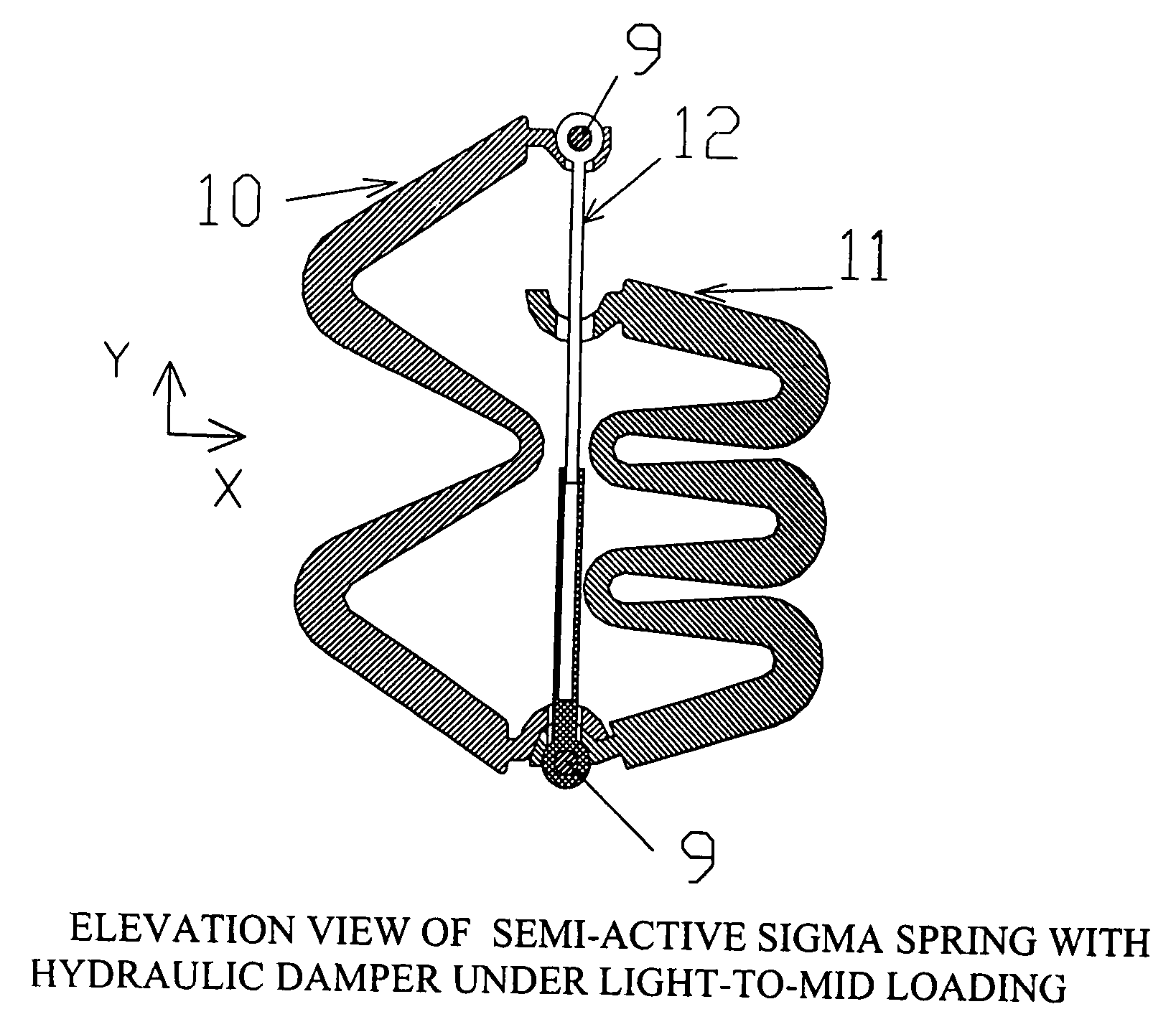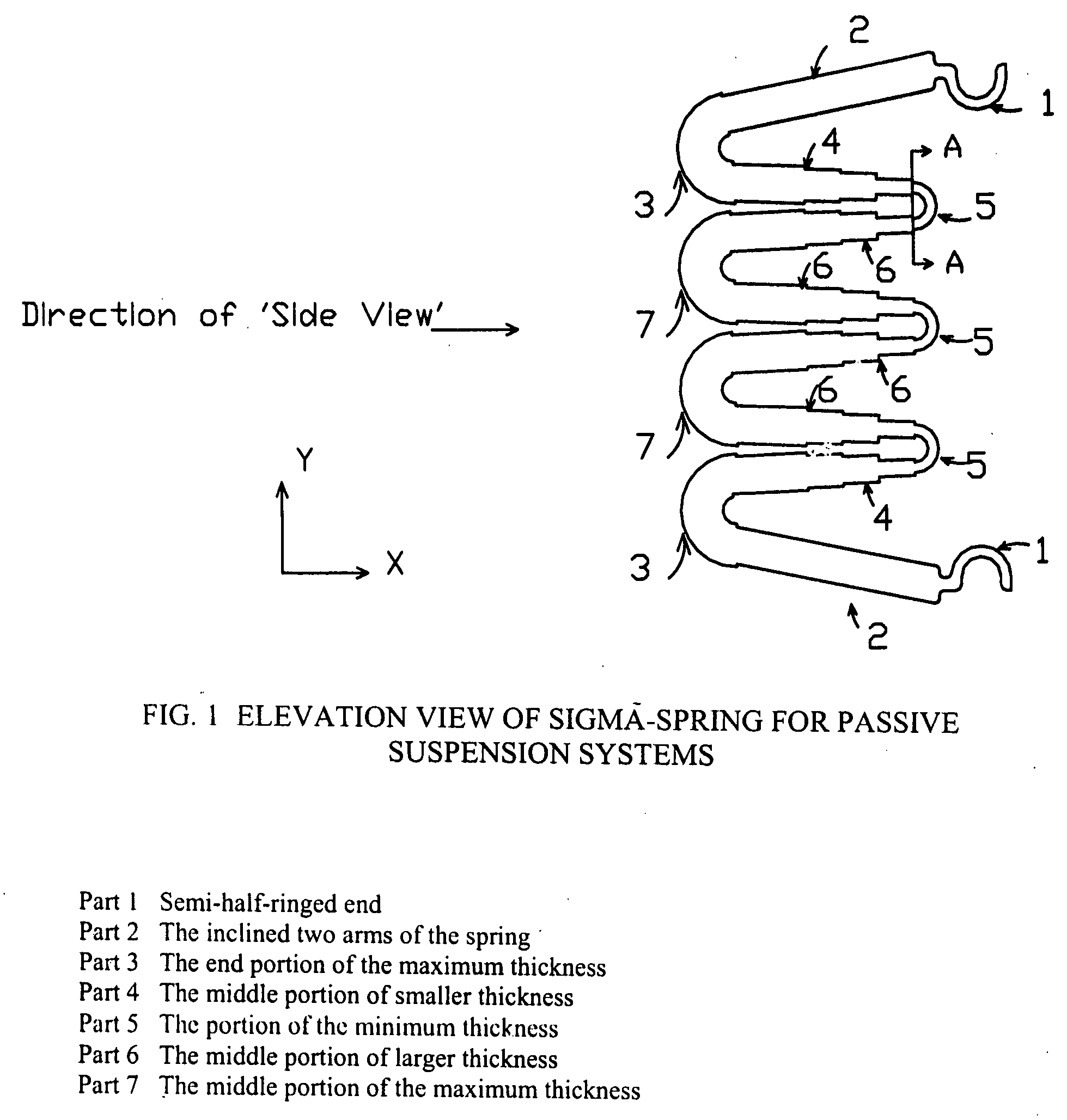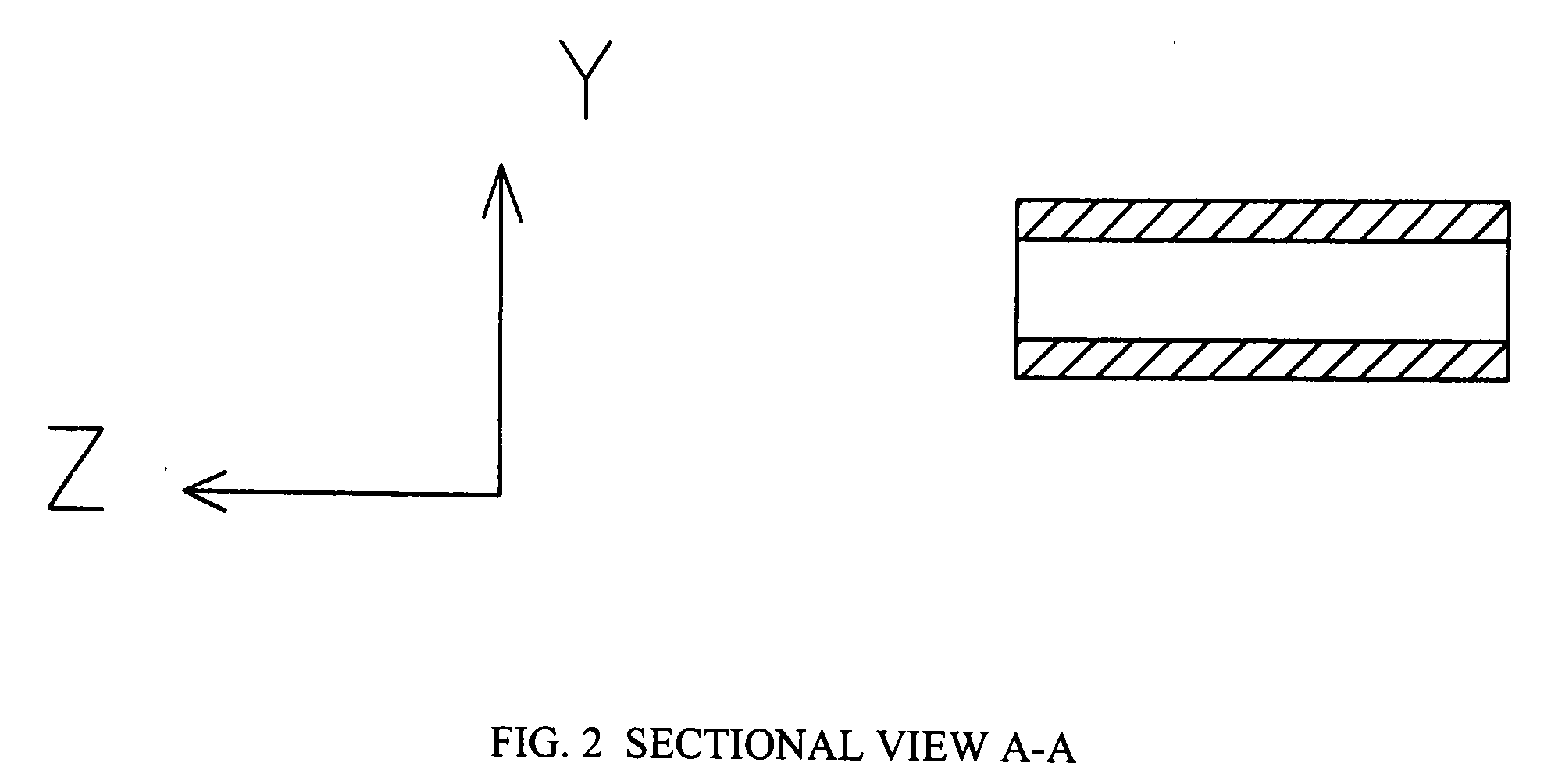Sigma-springs for suspension systems
a technology of suspension system and spring, which is applied in the direction of resilient suspension, vibration damper, mechanical apparatus, etc., can solve the problems of low load carrying capacity, weak deflection capability in compact space condition, and low load carrying capacity of prior art spring configuration and structure, and achieve high load carrying capacity, low cost, and high strength-to-weight ratio
- Summary
- Abstract
- Description
- Claims
- Application Information
AI Technical Summary
Benefits of technology
Problems solved by technology
Method used
Image
Examples
Embodiment Construction
[0036] The invention of Sigma-spring is dedicated to provide a superior deflection capability in compact space limitations. Moreover, the said spring can contribute in vibration isolation of the said suspended mass (8) while maintaining high strength to weight ratio. Furthermore, it can provide a nonlinear spring rate such that the spring rate increases as mass of the said suspended mass increases allowing less potential dynamic energy and consequently improved value of the said vibration isolation.
[0037] Referring now to FIG. 1 / 9, is an elevation view of the Sigma-spring shows continuous stream of the Capital Sigma-shape of the said spring and how rational is the graduated variation of thickness (4,5,6) throughout the developed length. In addition, in the course of the compression pattern of deflection of such shape, the portions of the maximum thickness (3,7) move away from each other in contrast with what they seem before loading. Such feature enables the possibility of increasi...
PUM
 Login to View More
Login to View More Abstract
Description
Claims
Application Information
 Login to View More
Login to View More - R&D
- Intellectual Property
- Life Sciences
- Materials
- Tech Scout
- Unparalleled Data Quality
- Higher Quality Content
- 60% Fewer Hallucinations
Browse by: Latest US Patents, China's latest patents, Technical Efficacy Thesaurus, Application Domain, Technology Topic, Popular Technical Reports.
© 2025 PatSnap. All rights reserved.Legal|Privacy policy|Modern Slavery Act Transparency Statement|Sitemap|About US| Contact US: help@patsnap.com



